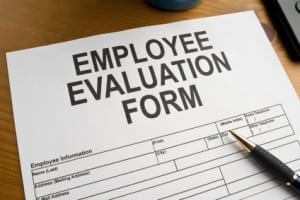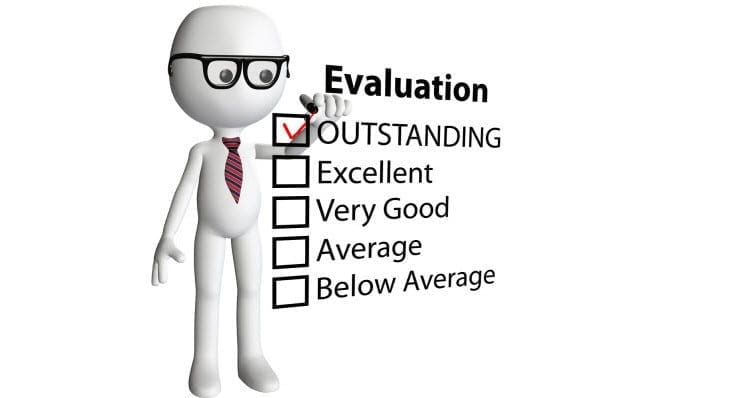 The annual performance review has a big bulls-eye on it. Nearly every day I receive an alert, newsletter, or magazine criticizing and critiquing its ineffectiveness. Despite the near unanimous agreement on the importance of giving employee’s feedback, the implementation of employee appraisals verges on absurdity.
The annual performance review has a big bulls-eye on it. Nearly every day I receive an alert, newsletter, or magazine criticizing and critiquing its ineffectiveness. Despite the near unanimous agreement on the importance of giving employee’s feedback, the implementation of employee appraisals verges on absurdity.
At the core of the absurdity lies the issue that managers store up praise, criticism, and feedback like squirrels storing up nuts for the winter. Then in what has become an annual ritual in some companies, the managers dig into their pile and dole out some plauditory or critical advice out to their employees.
Worse than giving formal feedback only once a year in a real-time world and expecting a change in behavior and performance is tying the whole process to compensation and promotion. Annual employee appraisals tied to salaries have little to do with performance and more to do with justifying the budget. That’s why many companies forego the annual review when times are tough and wage increases are stingy.
But the frequency of the employee reviews is not the most absurd aspect of the annual performance appraisal process. The criteria used to evaluate performance are a close second. In evaluating hundreds of review forms, I have seen broad terms like quality and quantity with no specific associated goals or outcomes and basic criteria such as appearance and attendance.
Many companies use the same form to evaluate everyone from senior management and housekeeping. Other times the criteria are important but not specific to the job or what translates to productive performance. Well-dressed, wholesome, and tattoo-free, piercing free employees who show up every day and on-time often are not the most productive. And yet managers give so much credit to appearance and attendance, these employees receive high scores and equal credit from the manager as the employee who shows up late but gets more quality work done in less time. It’s time managers begin to evaluate the behaviors and skills that lead to productivity, quality, and better outcomes.
But not even the once-a-year event and patchwork quilt of criteria can trump the questionable choice of rating systems used. During a recent conversation with a client, her “boss” insisted on using “expectations” as the basis for evaluating performance. You are probably familiar with the system where 5 = consistently exceeds expectations, 3 = meets expectations, and 1 = consistently misses expectations. Why did he insist? Because he paid a lot of money to a consultant several years ago to design the form. Was it working? No, that’s why he approached us about putting the employee evaluations online. (Personally I’m not sure how putting a bad form online solves the problem but he thought it would!)
So let’s look at the most commonly used rating system. It’s based on exceeding, meeting, or missing expectations. A problem is inherent in the definition of expectations.
Expectation – a feeling or belief about how successful, good, etc., someone or something will be.
By the very nature of the definition, using expectations is subjective. Worse it may have little to do with productivity and good outcomes. It’s not based on actual performance but a feeling that an employee fall short of his potential or demonstrated extra effort. It has little to do with performance tied to desirable and sustainable outcomes.
For example, let’s say you are evaluating the performance of two employees. Employee #1 is an under-performer. He’s a good person and loyal employee but expectations are low. At the end of the year, he meets his goals partially because you had low expectations for him. But he met your expectations and maybe even somewhat exceeded them; so you give him a 3 for meeting expectations or even higher.
Employee #2 on the other hand is a workhorse. You wish you had a more like him. He has big potential and you have high expectations for him. But he was distracted for personal reasons over the past few months, and he disappointed you. You give him a rating of 2 for sometimes missing expectations.
Here’s the problem. In spite of missed expectations, Employee #2 was still more competent and more productive than Employee #1. How fair is using expectations as the scoring basis especially if the annual performance review results are used for wage increases or succession planning?
Unfortunately a very high percentage of employee evaluation forms use the “exceed or missed expectations” rating.
A more objective and valuable approach to rating employees uses competence where a 5 = demonstrates expertise, 3 = demonstrates competence, and a 1 = does not demonstrate competence.
Competence – the ability to do something successfully or efficiently.
Doesn’t evaluating competence – skill, productive behavior, and successful results – make more sense than evaluating an employee’s performance based on expectations? Of course it does.
Other than frequency, the problem with employee performance evaluation isn’t the process. It is how the process is implemented. Providing employees ongoing feedback is imperative in today’s economy and business environment. The youngest generation demands feedback. Older and more experienced employees expect it.
Here are a few suggestions to improve employee performance appraisals in your company:
- An annual performance review may be fine as long as the manager is providing feedback, meeting with the employee, and documenting behavior and productivity frequently throughout the year.
- Dissociate the performance review and salary discussion. The employee performance appraisal and discussion about wages and promotion should be separate events.
- One form does not fit all. One form cannot work effectively for all levels of employees. Some criteria might overlap but each job or role has specific requirements. And even if the same criteria are used, different weights must be assigned to different jobs. Leadership might be a company-wide competency but it holds more weight for the Vice-President than it does the Customer Service Rep.
- Evaluate employees using criteria that make sense. Longer is not better. To make the employee evaluation most effective and efficient, managers should use criteria that drive productivity and desirable outcomes. If good behaviors in one criteria doesn’t contribute to more productivity and better outcomes, it doesn’t belong in the performance review.
- Use a rating system based on competence, not expectations. To be fair, performance appraisals should be objective, not based on a manager’s beliefs and feelings.

